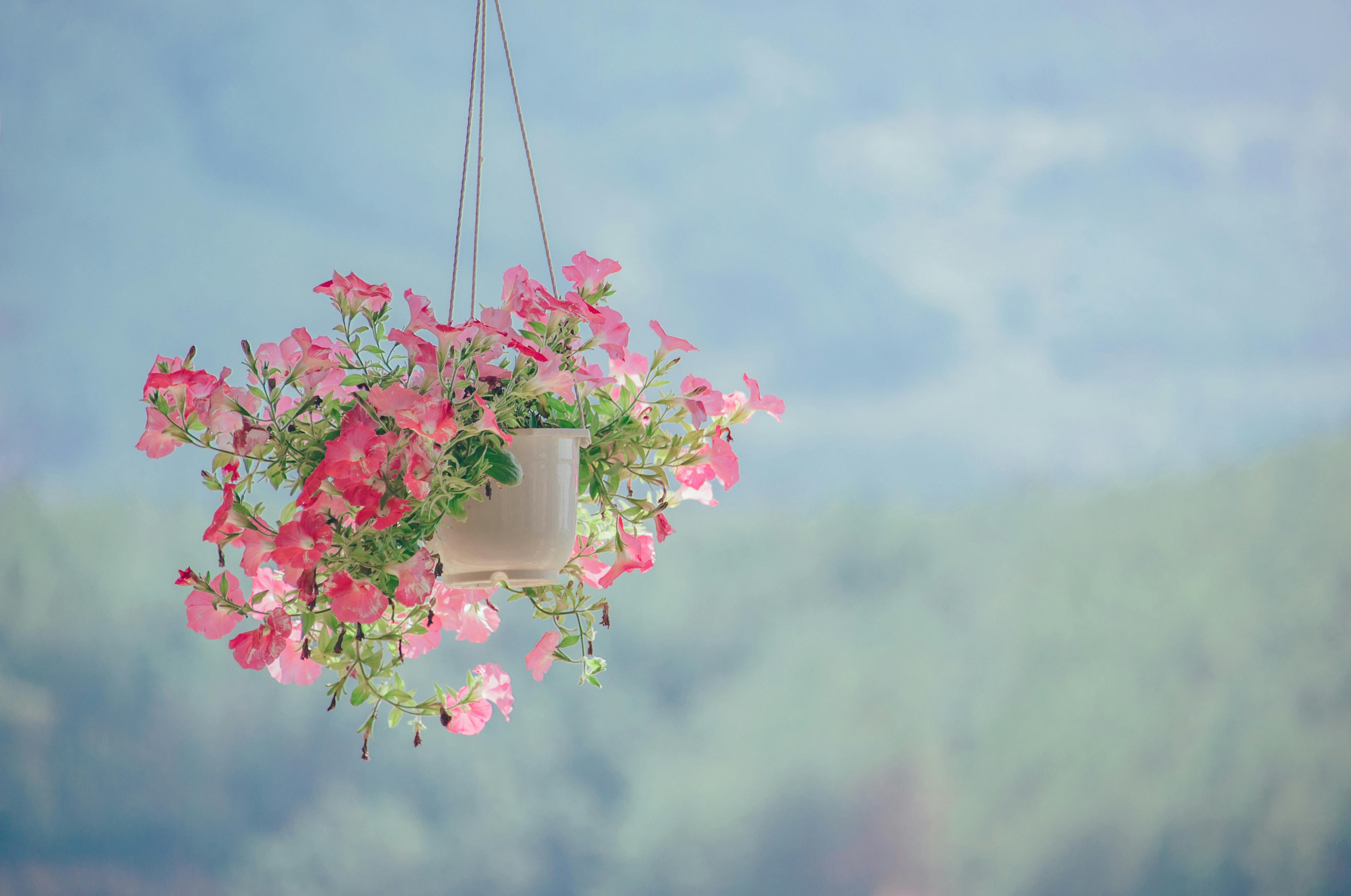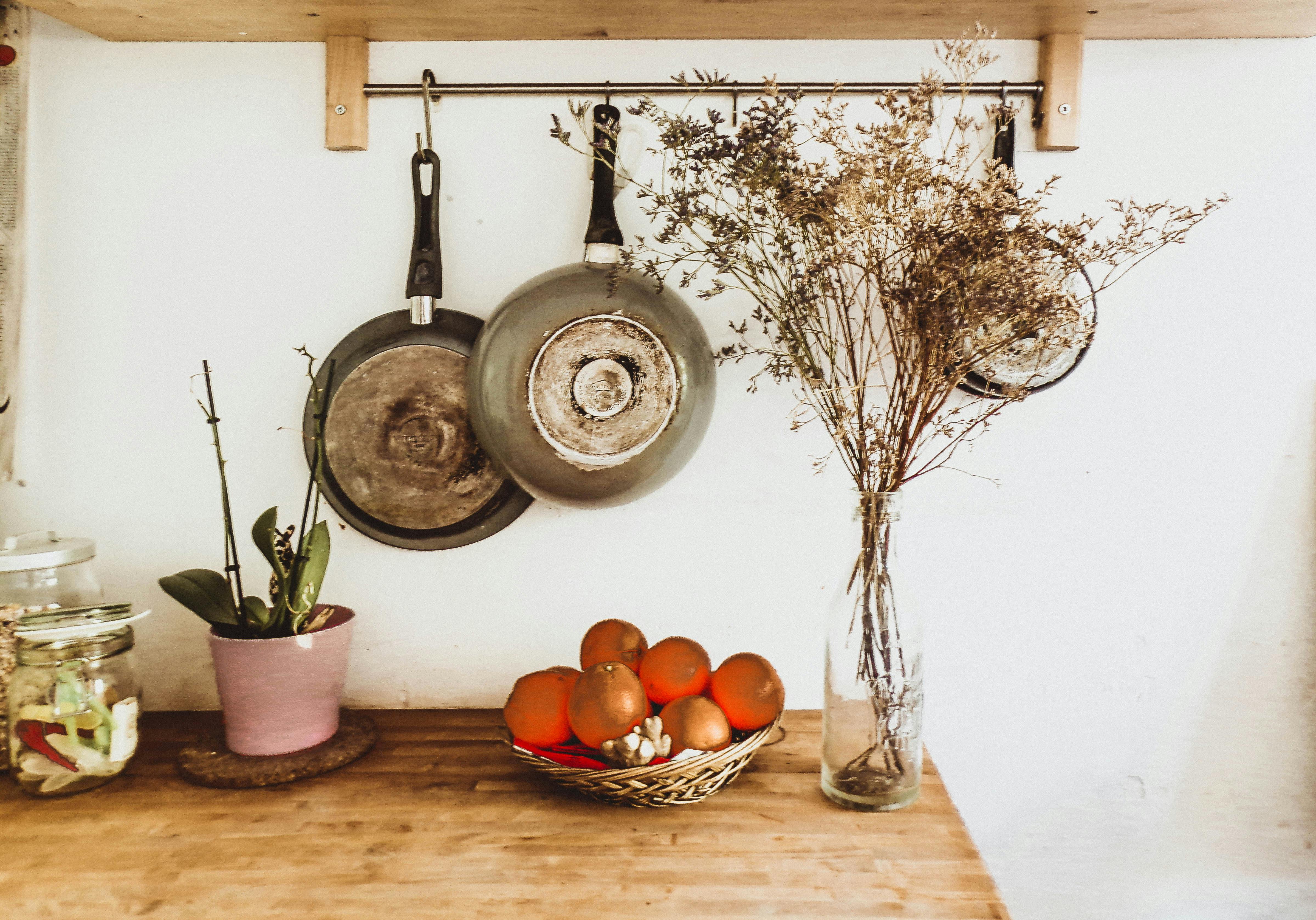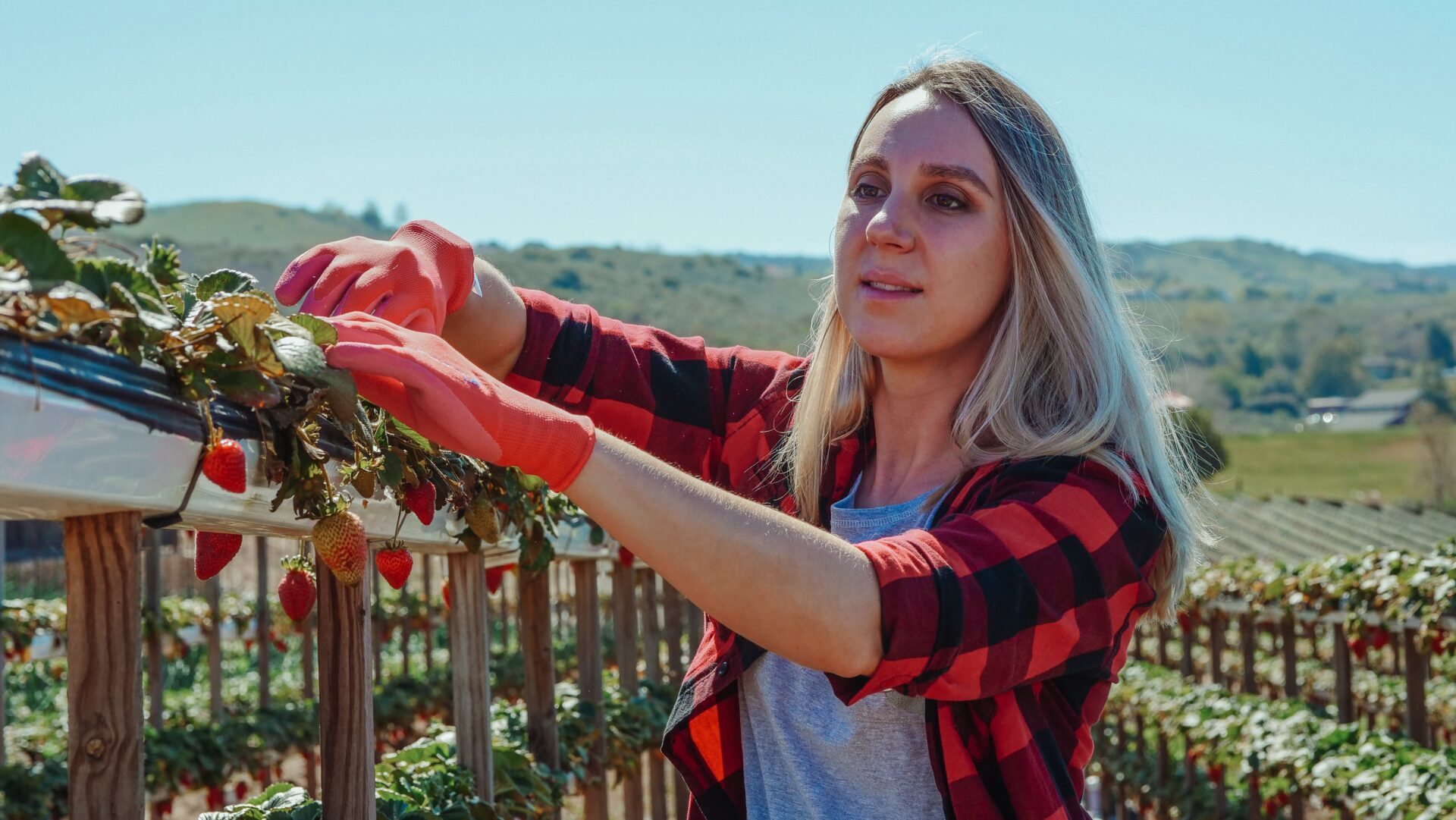Are you looking for an easy and fun way to grow your own strawberries? Growing hanging strawberries is a great option! Not only are they visually stunning, but they also produce sweet, delicious fruits that will tantalize your taste buds. This ultimate guide on how to plant hanging strawberries will provide you with all the information you need to get started. From choosing the right variety of strawberry to harvesting and caring for your plants, this guide will cover everything you need to know about growing hanging strawberries.Planting hanging strawberries is an easy way to get fresh strawberries straight from your garden. Here are the basics of planting hanging strawberries:
1. Choose a spot for your hanging strawberry planter that gets plenty of sun and is near a water source.
2. Plant your hanging strawberry planter in fertile, well-draining soil.
3. Place the planter in the chosen spot and fill it with soil, leaving about 3 inches of space at the top.
4. Plant your strawberry plants in the soil, allowing about 6 inches of space between each plant. Make sure to spread out their roots when planting them and to cover them with soil up to their crowns (the point at which the plant meets the root system).
5. Water your plants thoroughly after planting them and keep them watered regularly throughout their growing season.
6. Once your plants begin to produce berries, they should be ready for harvest within a few weeks. Once you’ve picked all of the berries from one plant, it’s time to remove it and replace it with a new one!
What You Will Need to Plant Hanging Strawberries
Growing strawberries in hanging baskets is a great way to maximize growing space. To get started, you will need some hanging baskets, potting soil, fertilizer, and strawberry plants.
Hanging baskets should be large enough to accommodate the growing plants. Look for baskets with holes in the bottom for drainage; these will help prevent the soil from getting too soggy.
Potting soil is specially formulated for growing in containers and is designed to hold moisture without becoming overly wet. Make sure you are using a good quality potting mix that is free of disease and pests.
Fertilizer is also important when growing strawberries. Look for one that contains slow release nitrogen, phosphorus, and potassium, as well as trace minerals that are essential for healthy plant growth.
Finally, you’ll need some strawberry plants. Look for varieties that are suited to container gardening such as ‘Temptation’, ‘Everbearing’, or ‘June Bearing’. These varieties are compact and produce lots of fruit over a long season.
Choosing the Right Location for Planting Hanging Strawberries
When looking to plant hanging strawberries, it is important to choose the right location in order to get the best yield. Hanging strawberries need a sunny spot that gets at least 8 hours of direct sunlight per day. The ideal location should also be sheltered from strong winds and have good air circulation. Moreover, it should not be located too close to other plants or trees, as this could limit the amount of sunlight and airflow that the strawberry plants get. Additionally, make sure that the soil is well-drained and has a pH level between 6.0 and 7.0.
In terms of where to hang your strawberry plants, you can either use hanging baskets or attach them to trellis or a wall-mounted frame. Hanging baskets are an easy option as you can move them around if needed, but they require more frequent watering than other options. Trellises and frames are great for providing support to the plants, but they may need more maintenance as they may need to be repositioned throughout the season.
It is also important to remember that strawberries prefer cooler temperatures so it is best to avoid planting them in areas that get too hot during summer months. If possible, choose a location that gets partial shade during mid-day when temperatures are at their highest. Additionally, make sure that there is access to water nearby so you can easily water your hanging strawberries when needed.
In conclusion, planting hanging strawberries can be a rewarding experience if done correctly. Make sure you take the time to plan ahead and choose a location with plenty of sun exposure, good air circulation and access to water for optimal growth and yield!
Preparing the Soil for Planting Hanging Strawberries
Growing your own hanging strawberries can be a rewarding experience. To get the best results, you need to start by preparing the soil for planting. To do this, you will need to choose a location that gets plenty of sunlight and has well-draining soil. It is also important to amend the soil with organic matter and fertilizer before planting.
You can start by tilling the soil to a depth of 12-15 inches. This will help break up any compacted areas and make it easier for the plants’ roots to penetrate the soil. After tilling, add some organic matter such as compost or aged manure to improve nutrient levels and improve drainage. You should also add fertilizer according to package instructions.
Once you have prepared the soil, you can start planting your hanging strawberries. It is important to space them properly so they have plenty of room to grow and spread out their roots. You should also make sure they are planted at the correct depth, usually 1-2 inches below soil level. Once planted, water them thoroughly and mulch around them with straw or wood chips to help keep moisture in and weeds out.
With proper care and maintenance, your hanging strawberries will thrive in their new home! With regular watering and fertilizing, they will produce an abundance of delicious fruit for years to come!
How to Plant Hanging Strawberry Seeds
Planting hanging strawberry seeds is a great way to grow your own sweet, juicy strawberries. This method of planting gives you the freedom to pick your own fresh strawberries from your garden or balcony without having to bend down and reach for them. Here is a step-by-step guide on how to plant hanging strawberry seeds.
Start by gathering the necessary materials. You will need hanging strawberry seeds, soil, fertilizer, and a pot that is large enough to hold the soil and give the plants plenty of room to grow. You can purchase hanging strawberry seeds from any garden center or online retailer.
Next, fill the pot with soil and fertilizer. Make sure that the fertilizer is specifically made for strawberries and that it contains all of the essential nutrients needed for healthy growth. Once you have filled the pot with soil and fertilizer, sprinkle some of the strawberry seeds over the surface of the pot.
Once you have done this, lightly cover the seeds with more soil and gently pat it down so that it is firmly in place. Water the pot well so that all of the seeds are moistened but not completely submerged in water. Place your pot in an area that receives plenty of sunlight and keep it well watered during its growing season.
Finally, as soon as your plants start producing fruit, be sure to harvest them as soon as they are ripe! Enjoy eating your freshly picked strawberries straight from your own garden! With just a little bit of effort, you can enjoy homegrown strawberries year round!

Planting Your Strawberries
Planting your hanging strawberry plants is the first step in caring for them. When selecting a location, be sure to choose an area where the plants will get at least 6 hours of direct sunlight each day. The soil should be well-drained and amended with organic matter such as compost, manure, or peat moss. Plant each strawberry so that the roots are pointing down and covered with soil. Water thoroughly after planting and mulch around the plants to help conserve moisture and keep weeds down.
Fertilizing Your Strawberries
Fertilizing your hanging strawberry plants is important for keeping them healthy and productive. Start fertilizing in early spring when new growth begins, and continue fertilizing every few weeks throughout the growing season. Use a balanced fertilizer or one specifically designed for strawberries, following the instructions on the label for application rates. Avoid over-fertilizing, as this can cause foliage burn or other damage to your plants.
Watering Your Strawberries
Watering your hanging strawberry plants is essential for their health and growth. Be sure to provide 1-2 inches of water per week during dry periods, either by hand watering or using an irrigation system such as drip tape or sprinklers. Do not over-water as this can cause root rot or other problems with your plants.
Pruning Your Strawberries
Pruning your hanging strawberry plants is important for promoting healthy growth and maximizing yields of fruit. Prune away dead leaves or damaged foliage throughout the growing season to maintain vigor and shape of the plant, as well as control pests and diseases that may infect it. Prune out any runners that form at the base of the plant to encourage more flowers and fruit production instead of vegetative growth.
Harvesting Your Strawberries
Harvesting your hanging strawberry plants should begin when they turn a deep red color with a hint of yellow at the tips of the berries – usually about 70 days after planting in most climates. Gently twist off ripe berries from their stems, leaving behind any unripe ones so they can continue ripening on the plant if temperatures allow it (or you can pick them later).
Fertilizing Your Hanging Strawberry Plants
Strawberry plants are one of the most popular fruits to grow in a backyard garden. They require relatively little care and maintenance and produce a plentiful harvest. To ensure your strawberry plants stay healthy and produce a bountiful crop, it’s important to fertilize them regularly. Fertilizing your hanging strawberry plants will help them stay strong and healthy throughout the season.
The best time to fertilize your hanging strawberry plants is in the spring, shortly after they have been planted. This will help give them a strong start and allow them to put down roots quickly. When selecting a fertilizer for your strawberry plants, look for one that is specifically formulated for strawberries or fruits in general. This type of fertilizer will contain all the essential nutrients needed for your strawberries to thrive.
When applying the fertilizer, it’s important to use it sparingly. Too much can cause damage to the roots and can even burn the leaves of the plant. The best way to apply it is around the base of each plant, avoiding contact with any foliage or flowers that may be present. You should also make sure not to fertilize during extremely hot weather as this can cause further damage to your plants.
Once you have applied the fertilizer, water your hanging strawberry plants thoroughly afterwards. This will help ensure that all of the nutrients are absorbed by the roots and taken up by the plant itself. It’s also important to monitor your strawberry plants throughout the growing season as they may need additional applications of fertilizer depending on their size and growth rate.
Overall, proper fertilization is essential for keeping your hanging strawberry plants healthy and producing an abundant harvest each year. Applying fertilizer in springtime when they’re first planted will give them a strong start and enable them to take full advantage of all the nutrients available in their environment throughout their growing season. With proper care and maintenance, you should be able enjoy delicious strawberries from your own garden for many years!
Harvesting Hanging Strawberries
Harvesting strawberries can be a fun and rewarding experience. Whether it’s for a delicious treat or to make some homemade jams and jellies, hanging strawberries are an ideal crop to grow in your garden. Strawberries are typically ready for harvest after the plants have produced flowers and the berries are turning red. To ensure you get the best possible harvest, there are a few tips for harvesting hanging strawberries that you should follow.
One of the most important things to consider when harvesting hanging strawberries is timing. Harvesting too soon can result in small, green berries that don’t taste very good. On the other hand, harvesting too late can cause the berries to be overripe and may not store well or have an off taste. To find out when your strawberries are ready for picking, take a look at the color of the berry. If it has reached a dark red color, it is likely ready for harvest.
When it comes to actually harvesting hanging strawberries, you want to be gentle with them as they can bruise easily if handled roughly. The best way to do this is by using scissors or pruning shears to cut off each berry from its stem individually. Don’t try to pull them off with your hands as this could damage both the berry and its stem, leading to rot before it has a chance to ripen properly on your countertop or in storage.
Once you’ve harvested all of your hanging strawberries, it’s time to enjoy! You can enjoy them fresh right away or store them in an airtight container in your refrigerator for up to five days. If you have more than you can eat within this time frame, you can also freeze them for up to six months so they won’t go bad before you get around to eating them!

Conclusion
Growing hanging strawberries is a great way to enjoy delicious, sweet fruits while adding some interesting and unique elements to your garden. With the right preparation and care, they can be a hardy and rewarding crop. To start growing your own hanging strawberries, first choose a site with full sun exposure, good soil drainage, and an appropriate location for hanging baskets. Then pick the right variety of strawberry for your needs. Ensure that you’re planting in the right season and that you’re giving the plants enough water and nutrients to thrive. Finally, monitor your plants for any signs of disease or pests and take appropriate action as needed. With these steps in mind, you can soon be harvesting baskets of fresh, juicy strawberries from your very own garden!
Overall, growing hanging strawberries is a great way to add some delicious fruit to your garden while also creating an interesting display. With the right preparation in place, you can look forward to harvesting tasty strawberries year after year!



